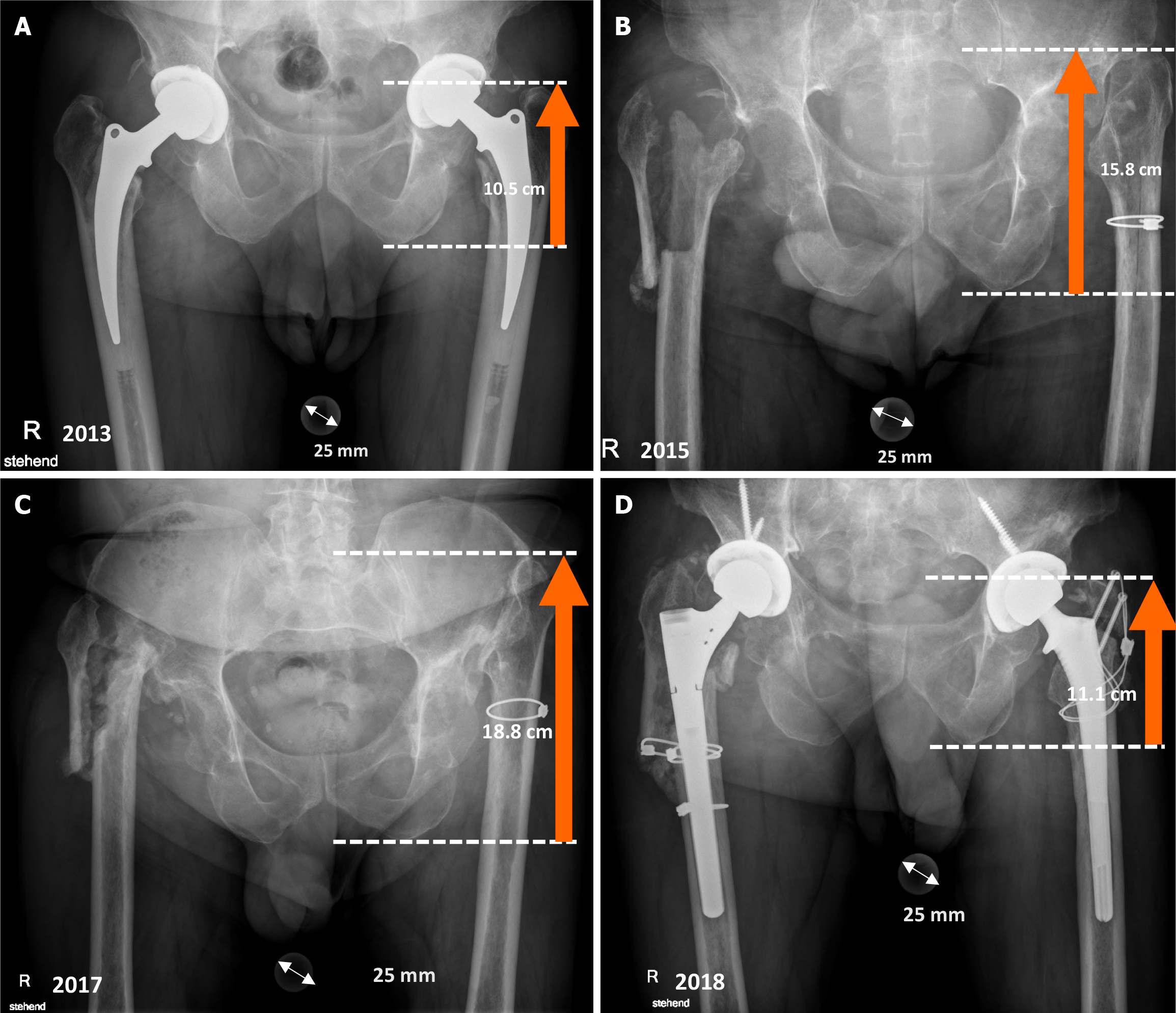Copyright
©The Author(s) 2024.
World J Orthop. Dec 18, 2024; 15(12): 1175-1182
Published online Dec 18, 2024. doi: 10.5312/wjo.v15.i12.1175
Published online Dec 18, 2024. doi: 10.5312/wjo.v15.i12.1175
Figure 1 A 58-year-old patient experienced poor functional outcomes following Girdlestone resection arthroplasty.
Weight bearing X-rays of the 58-year-old patient from 2013-2018. The dotted white lines and the orange arrows indicate the distance between the ischial tuberosity and the greater trochanter. A: After Girdlestone resection arthroplasty (GRA) in 2013. The baseline distance between the ischial tuberosity and greater trochanter was 10.5 cm; B: After GRA in 2015. The distance between the ischial tuberosity and greater trochanter increased to 15.8 cm; C: After GRA in 2017. The baseline distance between the ischial tuberosity and greater trochanter increased to 18.8 cm, indicating a leg shortening of 8.3 cm; D: After reimplantation of bilateral revision hip arthroplasty.
- Citation: Spuehler D, Kuster L, Ullrich O, Grob K. Femoral nerve palsy following Girdlestone resection arthroplasty: An observational cadaveric study. World J Orthop 2024; 15(12): 1175-1182
- URL: https://www.wjgnet.com/2218-5836/full/v15/i12/1175.htm
- DOI: https://dx.doi.org/10.5312/wjo.v15.i12.1175









